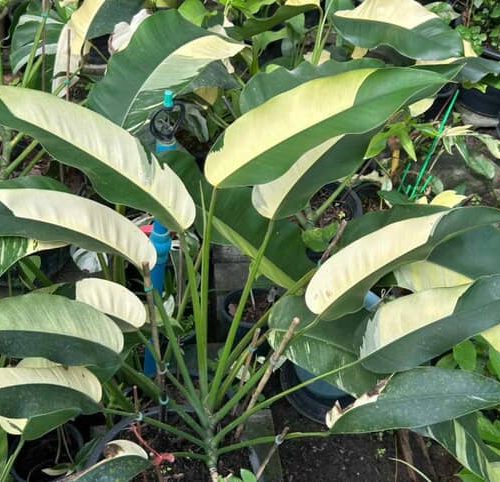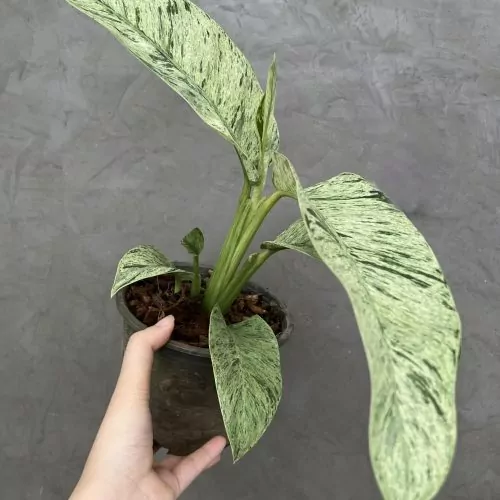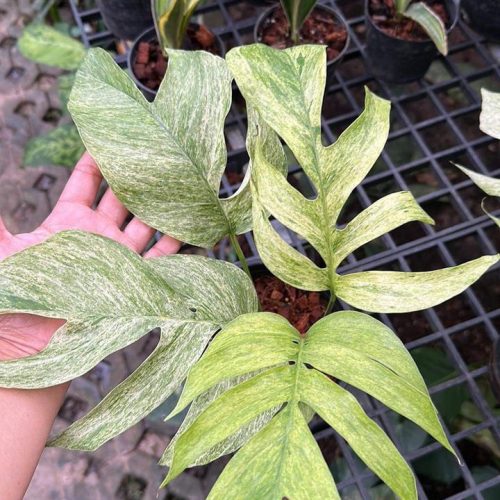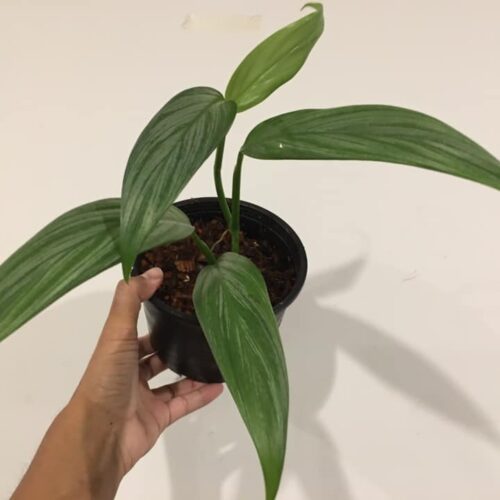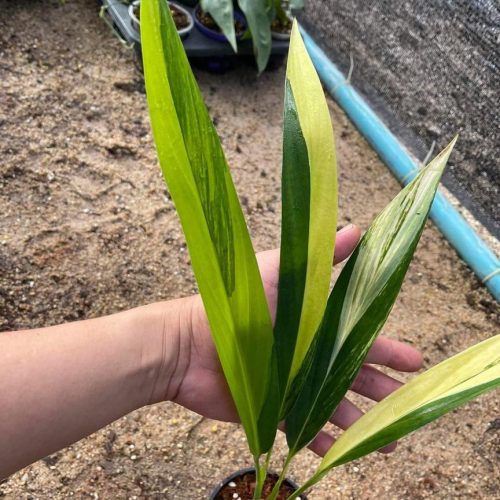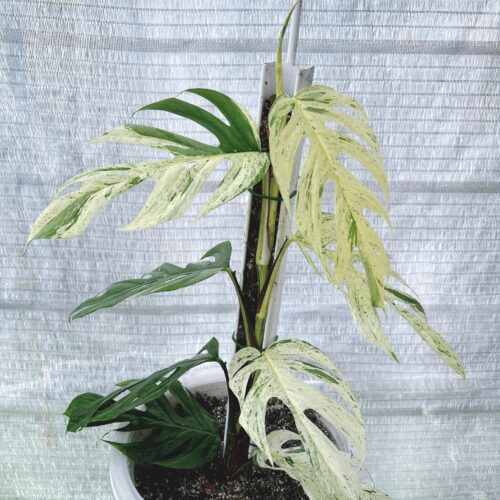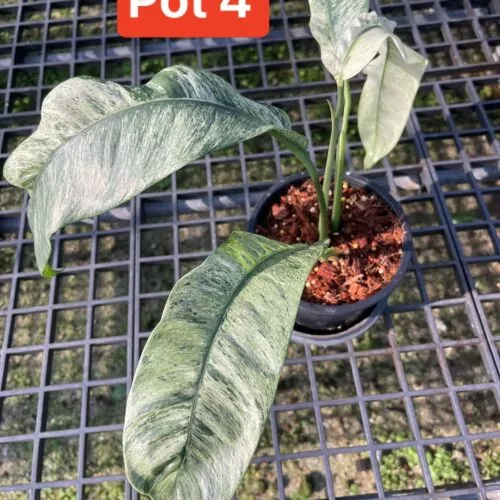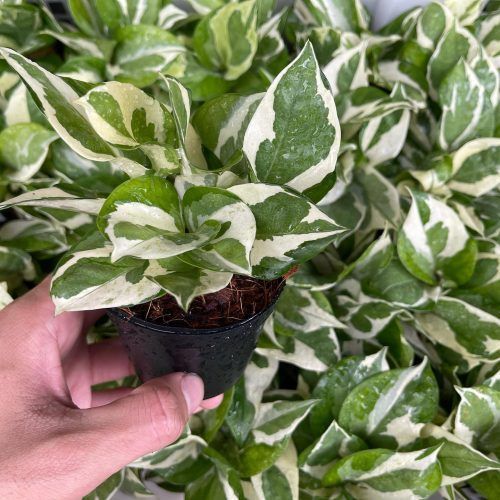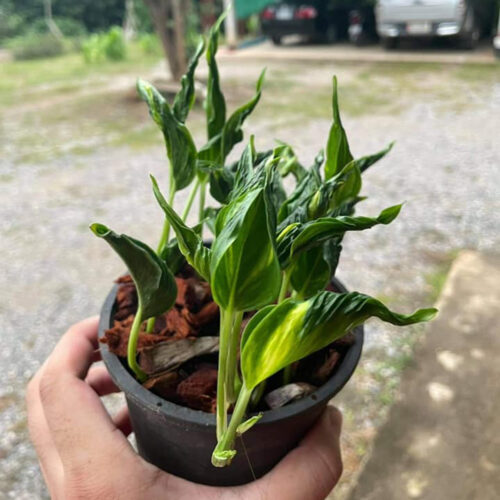Epipremnum Shangri La Aurea is a cultivar of pothos that is characterized by its vivid golden-yellow foliage. It is a popular houseplant appreciated for its lush tropical looks and easy care requirements.
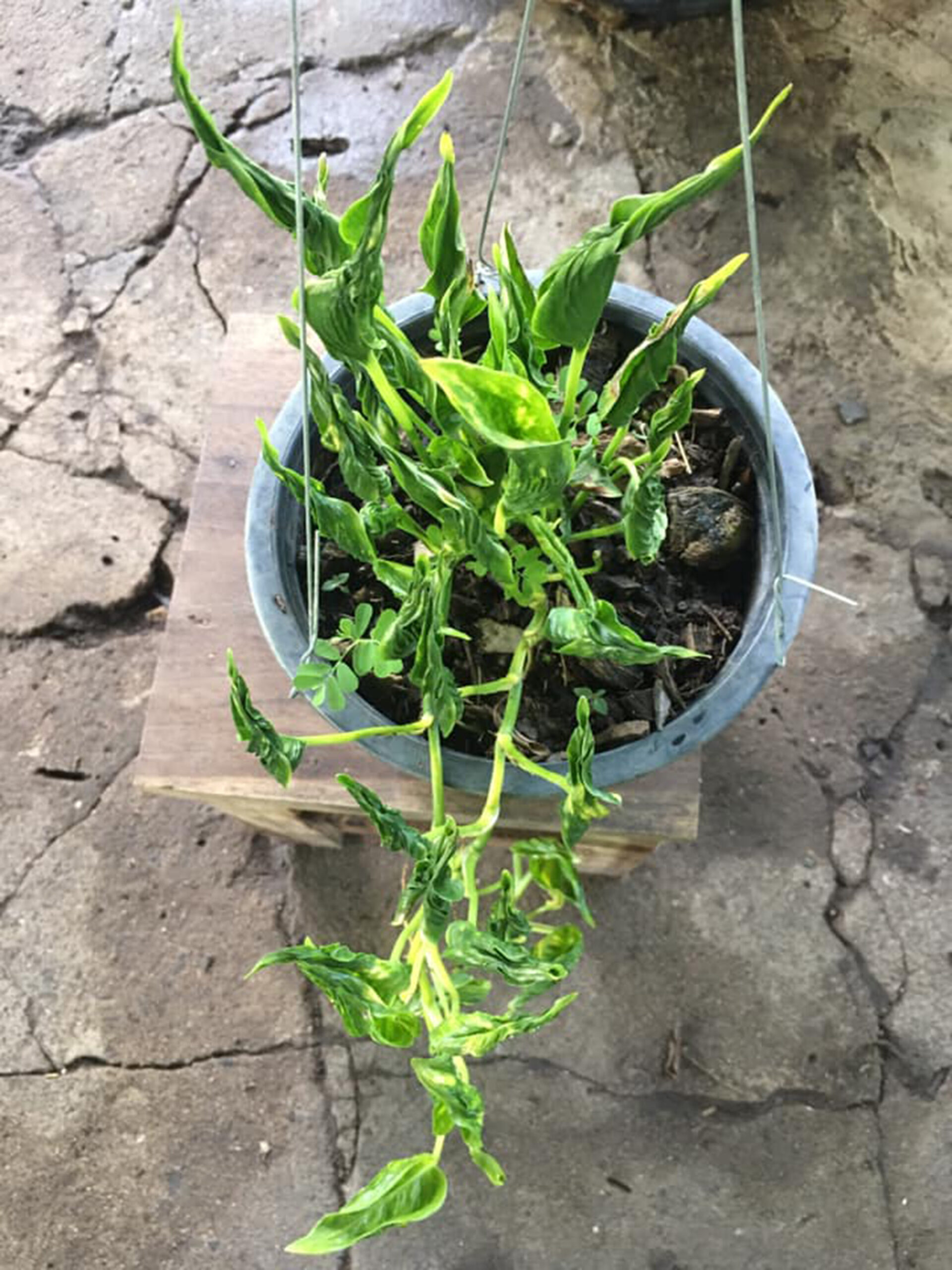
Overview and Origin
Epipremnum Shangri La Aurea is native to the Solomon Islands located in the southwestern Pacific Ocean. It likely arose there as a natural mutation of other local Epipremnum pothos species.
Natural Habitat
In its native Solomon Islands habitat, Epipremnum Shangri La would likely be found climbing up tree trunks in shaded tropical rainforests near streams and waterways. It is well adapted to warm, very humid environments.
Discovery and Propagation
Epipremnum Shangri La Aurea was first commercially propagated in Florida in the early 2000s after being imported from the Solomon Islands. Its vibrant golden foliate drew immediate attention, and it soon became popular in the houseplant trade. It remains a staple cultivar for its bright coloration and tropical vining habit.
For those interested in the broader family of Epipremnum and their origins, you might find “5 Must-Know Tips for Thriving Epipremnum Houseplants“ quite insightful. This article provides a deeper understanding of the natural habitat and origins of various Epipremnum species.
Plant Characteristics
Epipremnum Shangri La Aurea is an evergreen perennial vine in the Araceae family. It features lush green and yellow heart-shaped leaves attached to trailing or climbing stems.
Stems and Foliage
The stems of Epipremnum Shangri La are a brownish-green color and can trail along the ground or climb up supports using aerial rootlets. Its leaves emerge with a bright golden-yellow coloration which darkens slightly to a rich golden tone as leaves mature. The leaves have a distinct heart or oval shape with a pointed tip.
Flowers and Fruit
Like other pothos, Epipremnum Shangri La will occasionally produce small greenish-white flowers when very mature and happy. However, indoor specimens rarely flower. The flowers give way to small berry-like fruits if pollinated, though again, fruiting indoors is very rare.
If you’re curious about the diversity of Epipremnum in terms of leaf color, shape, and growth habits, a great resource to explore is “5 Stunning Epipremnum Varieties: A Must-See Guide!“. This guide delves into different varieties, showcasing the rich variety within the Epipremnum genus.
Growing Conditions
Epipremnum Shangri La Aurea thrives as a houseplant in most average home environments. It is one of the easiest tropical vines to grow.
Light Requirements
Epipremnum Shangri La does best in bright, indirect light indoors. Some early morning or late day direct sun is tolerated. Insufficient light will result in fewer golden leaves. Provide the brightest light possible without direct midday sun to maintain the most vibrant leaf coloration.
Water and Humidity
Water thoroughly when the top inch or so of soil dries out, allowing the soil to dry moderately between waterings. The plant performs best in average to high household humidity but can tolerate lower humidity. Mist leaves occasionally or use a pebble tray to boost moisture if needed.
Temperature and Air Flow
Normal indoor temperatures between 60-80°F (15-27°C) suit it well. Ensure good air movement and avoid cold drafts.
Soil Mix
A general houseplant soil mix that retains some moisture but still drains adequately is ideal. Add perlite or orchid bark to improve drainage if needed.
Fertilizer
Apply a balanced liquid houseplant fertilizer at half strength every 2-4 weeks in the growing season from spring through summer. Reduce feeding frequency in fall and winter months.
Support and Containers
Epipremnum Shangri La Aurea will trail gracefully from hanging baskets or climb up trellises, moss poles, fences, and other vertical supports via aerial roots. Choose containers with drainage holes and use cache pots to manage excess water drainage if displaying in decorative pots without holes.
“Bring the magic of nature into your home with the Epipremnum Shangri La Aurea! Click now to transform your space with this stunning, easy-care plant. Don’t wait, elevate your decor today!”

For detailed insights into the ideal growing conditions and care tips for Epipremnum, I recommend reading “5 Essential Tips for Thriving Epipremnum Indoors & Outdoors“. This article covers everything from light requirements to watering and temperature needs, ensuring your Epipremnum stays healthy and vibrant.
Care and Maintenance
Caring for Epipremnum Shangri La is quite simple. Focus on providing adequate bright, indirect light, allowing the soil to dry out some between waterings, and fertilizing regularly during the growing season.
Pruning
Pinch back wayward trailing stems or cut back entire vines as needed to shape and manage growth. Pruning occasionally also encourages new stems and leaves.
Propagation
Epipremnum Shangri La Aurea propagates readily from stem tip cuttings rooted in water or a well-draining mix. The plant also air layers easily by simply pinning trailing stems to mix filled pots. New baby plantlets will root directly into the mix.
Common Concerns
- Insufficient light causes foliage to fade and lose vibrant golden tones
- Overwatering can lead to root rot
- Underwatering causes leaf yellowing and drop
- Cold drafts or temperatures under 50°F (10°C) may impact health
With appropriate care, Epipremnum Shangri La Aurea makes an easy to grow houseplant that adds a vibrant pop of golden foliage to indoor displays and plantings. It’s an excellent vine for beginner gardeners but sure to delight experts as well.
Where to buy Epipremnum Shangri La Aurea? Benefits from importing plants from Thailand
- Shipping: Door to door shipping, fast and safe with Dragon Courier
- Biodiversity: Thailand is known for its rich biodiversity, including a wide variety of aroid species. This diversity allows importers to access a broad range of unique and exotic aroid plants.
- Quality and Health of Plants: The suitable climate helps the plants grown here stay healthy and of high quality.
- Cost-Effectiveness: Due to favorable growing conditions and efficient production methods, Thai aroid plants can often be more cost-effective compared to those from other countries.
- Access to Hybrid Varieties: Thai growers are often involved in the development of new hybrid aroid varieties, offering unique plants that may not be available from other sources.
Epipremnum species are the most sought after by aroid plant lovers
Conclusion
With its lush golden foliage that cascades gracefully from pots or climbs readily up supports, Epipremnum Shangri La Aurea is one of the most ornamental pothos varieties. Its vivid coloration, tropical looks, easy propagation, and simple care make it popular with houseplant growers at all experience levels. This golden pothos vine brings bright, exotic appeal indoors.
1. Is the ‘Golden Pothos’ toxic?
Yes, it’s mildly toxic to pets and humans if ingested due to calcium oxalate crystals in the plant’s sap.
2. How often should I water my ‘Golden Pothos’?
The frequency of watering can depend on several factors, including the size of the pot and the environmental conditions. Generally, allow the top inch of the soil to dry out between waterings.
3. Can ‘Golden Pothos’ grow in low light?
Yes, ‘Golden Pothos’ can tolerate low light conditions, although it prefers bright, indirect light.
4. How often should I fertilize my ‘Golden Pothos’?
During the growing season (spring to early fall), a balanced houseplant fertilizer diluted to half strength can be applied every four to six weeks.
5. Can ‘Golden Pothos’ be grown in water?
Yes, ‘Golden Pothos’ can be grown in water. However, if you decide to transition a soil-grown plant to water, it may take some time for the plant to adjust.

